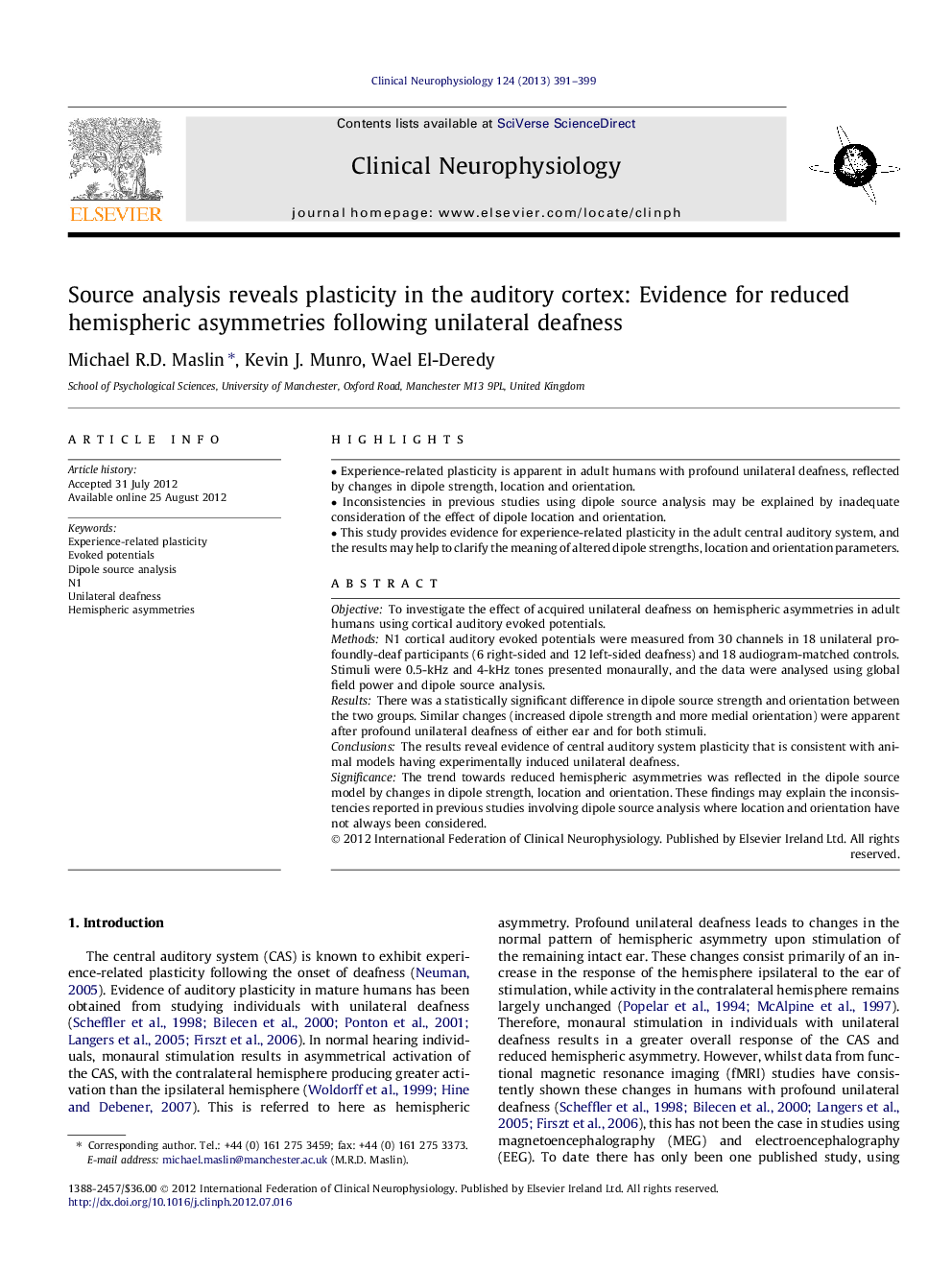| Article ID | Journal | Published Year | Pages | File Type |
|---|---|---|---|---|
| 3044620 | Clinical Neurophysiology | 2013 | 9 Pages |
ObjectiveTo investigate the effect of acquired unilateral deafness on hemispheric asymmetries in adult humans using cortical auditory evoked potentials.MethodsN1 cortical auditory evoked potentials were measured from 30 channels in 18 unilateral profoundly-deaf participants (6 right-sided and 12 left-sided deafness) and 18 audiogram-matched controls. Stimuli were 0.5-kHz and 4-kHz tones presented monaurally, and the data were analysed using global field power and dipole source analysis.ResultsThere was a statistically significant difference in dipole source strength and orientation between the two groups. Similar changes (increased dipole strength and more medial orientation) were apparent after profound unilateral deafness of either ear and for both stimuli.ConclusionsThe results reveal evidence of central auditory system plasticity that is consistent with animal models having experimentally induced unilateral deafness.SignificanceThe trend towards reduced hemispheric asymmetries was reflected in the dipole source model by changes in dipole strength, location and orientation. These findings may explain the inconsistencies reported in previous studies involving dipole source analysis where location and orientation have not always been considered.
► Experience-related plasticity is apparent in adult humans with profound unilateral deafness, reflected by changes in dipole strength, location and orientation. ► Inconsistencies in previous studies using dipole source analysis may be explained by inadequate consideration of the effect of dipole location and orientation. ► This study provides evidence for experience-related plasticity in the adult central auditory system, and the results may help to clarify the meaning of altered dipole strengths, location and orientation parameters.
